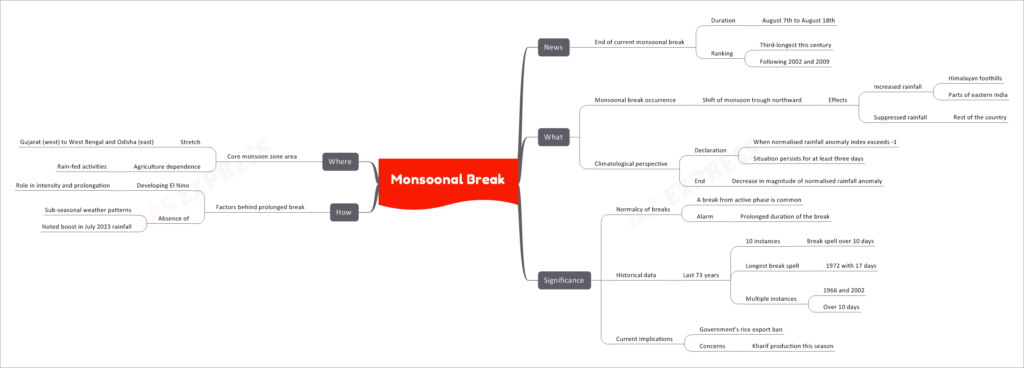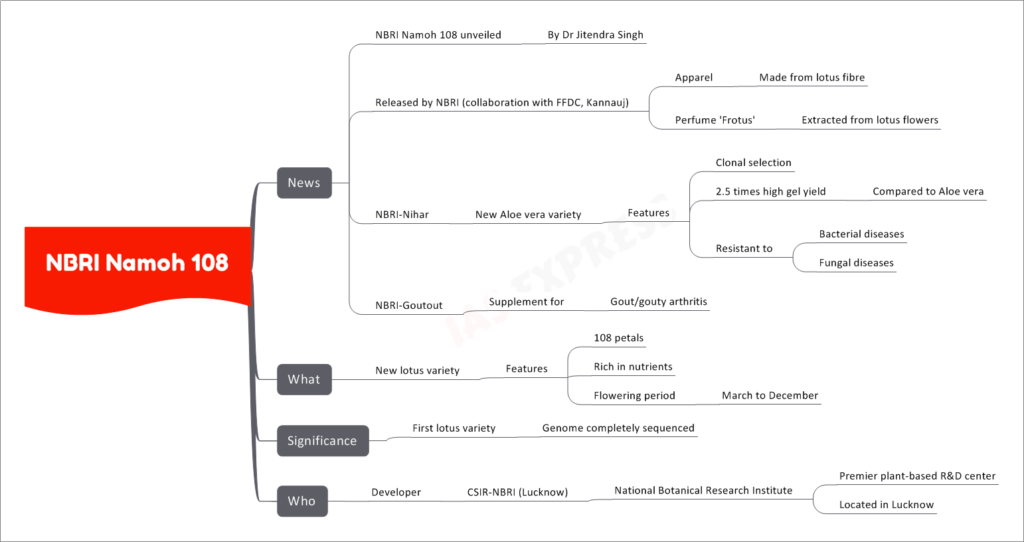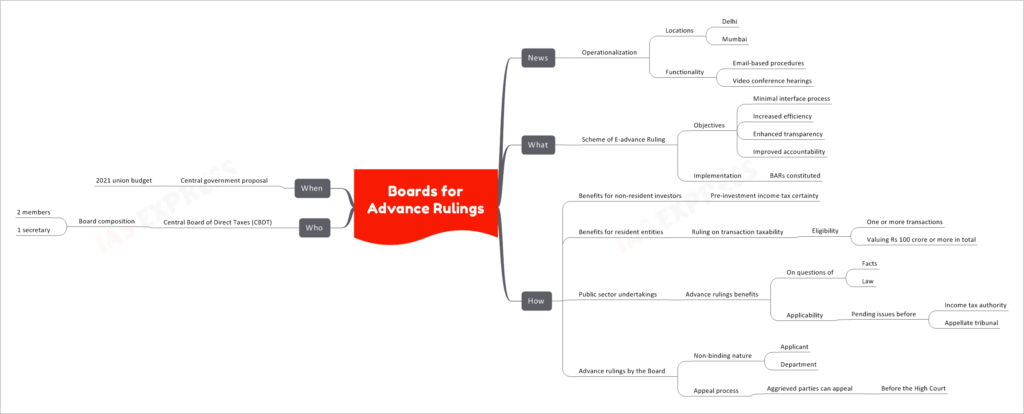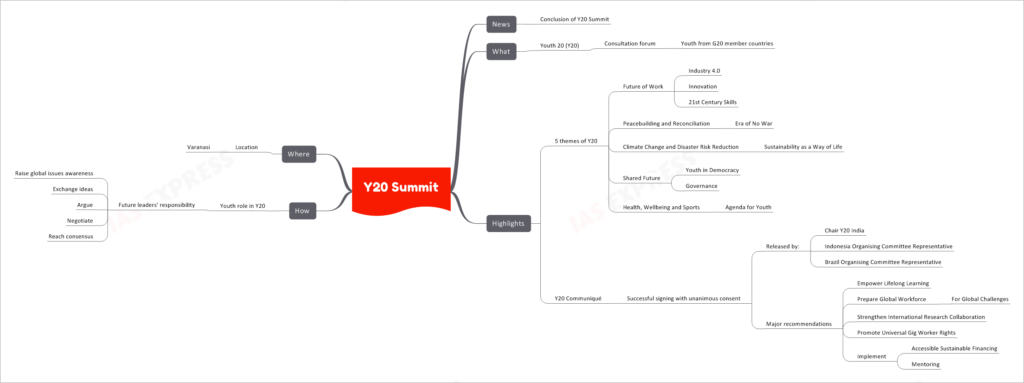[Newsbits] 21.08.2023

Canola-quality Mustard
The introduction of Canola Quality Mustard, featuring specific quality traits in rapeseed-mustard lines, holds immense significance for India's agricultural and economic landscape. This breakthrough, achieved by Indian scientists, addresses the critical need to reduce imports, boost domestic oilseed production, and achieve improved quality.
Unveiling Canola Quality Mustard
Canola Quality Mustard refers to rapeseed-mustard lines cultivated to possess distinct quality traits. These lines possess significantly lower levels of glucosinolates, compounds responsible for the pungency found in mustard seeds. While conventional mustard seeds contain around 120-130 ppm of glucosinolates, Canola seeds have successfully achieved sub-30 ppm levels.
The Significance of Canola Quality Mustard
The emergence of Canola Quality Mustard holds several key implications:
- Reducing Imports: India's dependency on oilseed imports can be mitigated through improved domestic production, leading to foreign exchange savings.
- Boosting Domestic Oilseed Production: Canola Quality Mustard embodies advancements in yield, pest resistance, and overall quality, contributing to self-sufficiency in oilseed production.
- Indian Scientific Breakthrough: Indian scientists have made substantial strides, including developments in genetically modified (GM) mustard and genetically edited (GE) low-seed high-leaf glucosinolate lines.
The Science Behind Canola Quality Mustard
Achieving Canola Quality Mustard involves reducing glucosinolate content. This has both benefits and drawbacks:
- Benefits: Lower glucosinolate content enhances oil and meal quality, enhancing overall usability.
- Drawbacks: Decreased glucosinolate levels can render the plant more vulnerable to pests and diseases.
Glucosinolates play a role in protecting plants against pests and diseases. To achieve lower seed glucosinolate and higher leaf glucosinolate content, scientists employed gene-editing techniques, including CRISPR/Cas9, to target specific genes. This resulted in a transformation of the glucosinolate profile.
The Pioneering Institution
The National Institute of Plant Genome Research, based in Delhi, spearheaded the development of Canola Quality Mustard.
Unraveling Genetic Engineering vs. Genetic Modification
Distinguishing between genetic engineering (GE) and genetic modification (GM) is crucial:
- Genetic Engineering (GE): The new mustard variety is a GE plant that does not possess any foreign genes. This contrasts with GM plants, which incorporate genes from other organisms, such as Bacillus thuringiensis in cotton.
Regulatory Insights
Regulations regarding genetically modified crops (GM) are pivotal:
- GM crops necessitate approval from the Genetic Engineering Approval Committee (GEAC) for cultivation and trials.
- An exemption for GE plants for open field trials was established on March 30, 2022.
Mustard's Role in India
Mustard is a major domestically-grown oilseed, accounting for 42.6% of India's vegetable oil production. India's significant imports of edible oils, valued at $20.84 billion, underscore the importance of boosting domestic production. Mustard, along with soybean, plays a crucial role in this endeavor.
Monsoonal Break
Monsoonal breaks are periods of suppressed rainfall amid the monsoon season, impacting various regions across the Indian subcontinent. The recent break, lasting from August 7th to August 18th, is noteworthy for its extended duration and the consequential effects it has had on different parts of the country.
Understanding Monsoonal Breaks
Monsoonal breaks occur due to the northward shift of the monsoon trough, a belt of low pressure. This shift results in two distinct effects on rainfall patterns:
- Increased Rainfall: Regions along the Himalayan foothills and parts of eastern India experience increased rainfall during the break.
- Suppressed Rainfall: The rest of the country, including areas in the core monsoon zone, witnesses a decline in rainfall.
Climatological Perspective
Monsoonal breaks are declared when the normalized rainfall anomaly index falls below -1 and this situation persists for at least three consecutive days. The end of a break is characterized by a decrease in the magnitude of the normalized rainfall anomaly.
Significance of Monsoonal Breaks
While a break from the active monsoon phase is common, prolonged breaks like the recent one raise concerns. Historical data spanning the last 73 years reveals that breaks of over 10 days have occurred in 10 instances. The longest break spell was observed in 1972, lasting for 17 days. Multiple instances of prolonged breaks, such as in 1966 and 2002, have persisted for over 10 days.
Implications of the Current Break
The recent monsoonal break has raised concerns about the implications for Kharif crop production this season. The government's decision to ban rice exports highlights the potential impact of this break on agricultural productivity.
Factors Behind Prolonged Breaks
Prolonged breaks can be attributed to several factors, with a developing El Niño playing a significant role in influencing the intensity and duration of these breaks. The absence of sub-seasonal weather patterns, coupled with a boost in July 2023 rainfall, further contributed to the current situation.
Core Monsoon Zone: Where It Matters
The core monsoon zone spans from Gujarat in the west to West Bengal and Odisha in the east. This region heavily relies on rain-fed activities for agriculture, making the patterns of the monsoonal breaks of paramount importance for the livelihoods of millions of people.
NBRI Namoh 108
The introduction of NBRI Namoh 108, a new lotus variety, has brought attention to the incredible potential of botanical research and innovation. Developed by the National Botanical Research Institute (NBRI) in collaboration with FFDC, Kannauj, this lotus variety is rich in nutrients and offers a range of unique applications.
The Unveiling of NBRI Namoh 108
Dr. Jitendra Singh unveiled the extraordinary NBRI Namoh 108, showcasing the innovative work carried out by the scientists at NBRI. This development stands as a testament to the institute's commitment to exploring the potential of plant-based resources.
Lotus-Based Apparel and Perfume 'Frotus'
The lotus fibre-based apparel introduced with NBRI Namoh 108 showcases the innovative use of plant resources. Additionally, the perfume 'Frotus' extracted from lotus flowers demonstrates the diverse applications that can be derived from botanical sources.
NBRI-Nihar: Aloe Vera's Enhanced Version
The NBRI-Nihar project has introduced a new variety of Aloe vera with enhanced features. Through clonal selection, this variety boasts a 2.5 times higher gel yield compared to traditional Aloe vera. Notably, it is also resistant to bacterial and fungal diseases, making it a valuable addition to agricultural practices.
NBRI-Goutout: Addressing Gouty Arthritis
Addressing health concerns, NBRI-Goutout is a supplement developed to assist individuals dealing with gout or gouty arthritis. This supplement showcases the institute's dedication to leveraging botanical resources for medicinal purposes.
The Unique Lotus Variety - NBRI Namoh 108
The newly introduced lotus variety, NBRI Namoh 108, holds distinctive features that set it apart:
- 108 Petals: This unique variety boasts an impressive 108 petals, adding to its visual allure.
- Nutrient Rich: NBRI Namoh 108 is rich in nutrients, showcasing the potential of lotus plants for various applications.
- Extended Flowering Period: This lotus variety blooms from March to December, providing a prolonged period of beauty and elegance.
The Significance of NBRI Namoh 108
NBRI Namoh 108 holds significant importance as the first lotus variety whose genome has been completely sequenced. This achievement demonstrates the institute's cutting-edge research capabilities and contributes to the broader understanding of plant genetics.
The Developer: CSIR-NBRI
The creator of NBRI Namoh 108 is the CSIR-NBRI (National Botanical Research Institute) situated in Lucknow. This premier plant-based Research and Development center has showcased its expertise in botanical research through this remarkable innovation.
Boards for Advance Rulings
The operationalization of Boards for Advance Rulings (BARs) brings a fresh approach to addressing tax-related uncertainties. Through email-based procedures and video conference hearings, BARs are set to enhance the efficiency, transparency, and accountability of the tax ruling process.
What are Boards for Advance Rulings (BARs)?
The Scheme of E-advance Ruling has introduced Boards for Advance Rulings (BARs) as a means to provide timely and authoritative rulings on complex tax matters. This initiative aims to minimize direct interactions and maximize the efficiency of the advance ruling process.
Objectives of the Scheme
- Minimal Interface Process: Reducing unnecessary interactions between taxpayers and tax authorities.
- Increased Efficiency: Expedited resolution of tax-related queries and concerns.
- Enhanced Transparency: Providing clear and transparent rulings on tax matters.
- Improved Accountability: Ensuring that the tax rulings are consistent and in line with the law.
Implementation of BARs
Boards for Advance Rulings (BARs) have been constituted to carry out the objectives of the Scheme of E-advance Ruling.
How Does BARs Benefit Taxpayers?
Benefits for Non-Resident Investors
Non-resident investors stand to gain pre-investment income tax certainty through the advance rulings provided by BARs. This certainty enables them to make informed investment decisions in the Indian market.
Benefits for Resident Entities
Resident entities can seek rulings on the taxability of their transactions, provided they meet specific eligibility criteria. The transactions in question must be valued at Rs 100 crore or more in total and can involve one or more transactions.
Public Sector Undertakings (PSUs)
Public sector undertakings can also benefit from advance rulings provided by BARs. These rulings apply to questions of both facts and law, and they cover issues pending before income tax authorities or appellate tribunals.
Advance Rulings by the Board
The rulings provided by BARs hold a non-binding nature. This means that while they provide guidance to the applicant and the tax department, they are not legally binding.
Appeal Process
Aggrieved parties, including both the applicant and the tax department, have the right to appeal against the ruling provided by BARs. Such appeals can be made before the High Court.
The Role of Central Board of Direct Taxes (CBDT)
The operationalization of BARs is a significant step forward, orchestrated by the Central Board of Direct Taxes (CBDT). This body consists of two members and one secretary, collectively driving tax policy and administration in India.
The Journey of BARs
The proposal for Boards for Advance Rulings (BARs) was introduced by the Central Government in the 2021 Union Budget. This initiative showcases the government's commitment to providing a conducive and transparent tax environment for businesses and investors.
Y20 Summit
The Y20 Summit, which recently concluded, has brought together youth from G20 member countries in a unique forum to discuss and address significant global challenges. This platform empowers young individuals to voice their perspectives and contribute to shaping a better future.
What is the Y20 Summit?
The Y20 Summit, also known as the Youth 20 Summit, is a consultation forum that gathers young delegates from G20 member countries. This initiative aims to engage youth in discussions on various global issues, encouraging collaboration and the exchange of ideas.
Highlights of Y20
The Y20 Summit revolves around five key themes that are pivotal to shaping the future:
1. Future of Work
- Embracing Industry 4.0
- Fostering innovation
- Developing 21st-century skills for a changing job landscape
2. Peacebuilding and Reconciliation
- Advocating for an era of no war
- Prioritizing peacebuilding and conflict resolution
3. Climate Change and Disaster Risk Reduction
- Integrating sustainability into daily life
- Addressing climate change and minimizing disaster risks
4. Shared Future
- Elevating youth in democracy and governance
- Encouraging active participation of young citizens
5. Health, Wellbeing, and Sports
- Setting an agenda for youth-related health and wellbeing initiatives
The Y20 Communiqué, signed with unanimous consent, was released by representatives from the Chair Y20 India, the Indonesia Organising Committee, and the Brazil Organising Committee. This document highlights significant recommendations for global action.
Major Recommendations from the Y20 Communiqué
- Empower Lifelong Learning: Promoting continuous education and skill development throughout life.
- Prepare Global Workforce for Global Challenges: Equipping the workforce with the skills needed to tackle international challenges.
- Strengthen International Research Collaboration: Collaborating on research initiatives to address global issues effectively.
- Promote Universal Gig Worker Rights: Ensuring fair and just treatment for gig workers on a global scale.
- Implement Accessible Sustainable Financing: Establishing sustainable financing options that are accessible to all.
- Mentoring: Providing guidance and mentorship to nurture young talent.
How Youth Contribute to the Y20 Summit
The youth participating in the Y20 Summit play a crucial role as future leaders. They raise awareness about global issues, exchange ideas, engage in arguments, negotiate, and work towards reaching a consensus. This active involvement helps shape the recommendations and policies discussed at the summit.
Where the Y20 Summit Takes Place
The Y20 Summit was hosted in the culturally rich city of Varanasi. This location provided an inspiring backdrop for young minds to come together and discuss pressing global issues, fostering a sense of unity and collaboration.
Bharat NCAP
The Bharat NCAP, which stands for Bharat New Car Assessment Program, is a groundbreaking initiative aimed at enhancing passenger car safety standards in India. With a focus on promoting transparency and raising consumer awareness, this program holds immense significance in ensuring the safety of vehicle occupants on Indian roads.
What is Bharat NCAP?
Bharat NCAP is a safety assessment program specifically designed for passenger vehicles, encompassing cars that can carry up to 8 people and vehicles weighing under 3.5 tonnes. This initiative is a response to the growing need for robust safety measures in the Indian automotive industry.
Highlights of Bharat NCAP
The program introduces a comprehensive crash-test program, employing a point-based scoring system that translates into star ratings. The star ratings offer potential customers a clear reference for purchase decisions based on the safety credentials of the vehicle.
Crash-Test Program and Point System
- Translating to Stars: The crash-test results are represented through star ratings. The safest cars are awarded 5 stars, indicating the highest level of safety.
- Voluntary Testing: Manufacturers can voluntarily subject their vehicles to testing as per the Automotive Industry Standard (AIS) 197.
Types of Crash Tests
- Frontal Crash Test: Conducted at a speed of 64 kmph, this test assesses how well a vehicle's structure absorbs the impact during a head-on collision.
- Side Crash Test: Conducted at 50 kmph, this test evaluates the vehicle's ability to protect occupants during a side collision.
- Pole-Side Crash Test: This test simulates a side collision with a pole or tree at 29 kmph, assessing the car's structural integrity and occupant protection.
Scoring System
- Adult Safety for Front Passengers: The maximum score is 32 points, with a minimum of 27 points required for a 5-star rating.
- Child Safety at Rear: The maximum score is 49 points, with a minimum of 41 points needed for a 5-star rating.
- Additional Points: Vehicles are awarded additional points based on factors like restraint systems, including ISOFIX anchorages.
Why Bharat NCAP?
The Bharat NCAP serves various essential purposes, including increased transparency, consumer awareness creation, and helping buyers make informed choices based on the safety credentials of the vehicles they are considering purchasing.
Significance of Bharat NCAP
This initiative aligns India's vehicle safety standards with global benchmarks. Countries like the US, Europe, Japan, Australia, and Latin America have their own National Car Assessment Programs (NCAPs), emphasizing the importance of such safety assessments worldwide.
Facts about the Current Scenario
- The existing Indian standard includes a basic conformity crash test conducted at 56 kmph, which lacks star ratings and leaves consumers without safety-based information.
- Global NCAP has been testing Indian cars since 2014, leading to progress in recent years. Out of 62 crash tests conducted, 20 cars received 0 stars (all five years ago), while 8 cars received 5 stars (all under three years old).
- Indian test centers in Pune, Manesar, and Indore enable cheaper and easier in-country testing, resulting in more cars being tested and companies leveraging star ratings to improve safety features.






